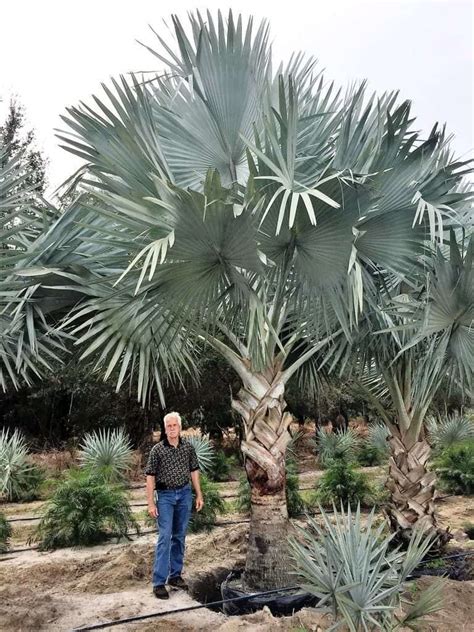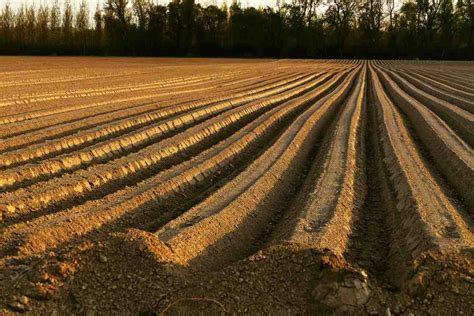Are you yearning for a slice of paradise right in your own backyard? Do you dream of transforming your mundane garden into a vibrant oasis reminiscent of a tropical paradise? If so, then join us on a journey of exploration and learn the secrets of planting a magnificent palm tree.
Imagine the gentle rustling of palm fronds as a cool breeze caresses your skin, transporting you to a faraway beach. Feel the warm sand beneath your feet as you bask in the shade of tall, slender trees, their luscious green canopy providing you with an escape from the ordinary. With the right knowledge and guidance, you too can have your very own tropical escape, a sanctuary of tranquility and beauty.
Discover the art and science behind creating a paradise of your own. Follow in the footsteps of ancient civilizations who revered the palm tree for its versatility, elegance, and symbolic significance. Unleash your inner gardener and unlock the mysteries of soil preparation, proper planting techniques, and nurturing care that will guarantee the success of your palm tree.
Through this enlightening journey, we will delve into the rich history of palm trees and their connection to various cultures around the world. From ancient Egyptian pictographs to modern-day beach resorts, these majestic trees have stood the test of time, captivating hearts and inspiring awe wherever they grow. So, embrace the challenge and let us guide you through the intricate steps involved in establishing and maintaining your very own tropical haven.
No matter the size of your space or the climatic conditions of your region, with the knowledge and determination, you can turn your backyard into a paradise brimming with lush foliage, vibrant colors, and the mesmerizing presence of palm trees, your personal piece of heaven on earth.
Choosing the Ideal Palm Variety to Create Your Exotic Haven

In the process of transforming your landscape into a captivating tropical retreat, the selection of the perfect palm species plays a pivotal role. A careful consideration of various factors is required to ensure that the chosen palm trees not only thrive in your desired setting but also add an unmistakable charm to your personal oasis.
Diversity of Palm Options: One of the most intriguing aspects of palm trees is their immense variety. With an astonishing array of palm species to choose from, ranging in size, shape, color, and foliage, you have the opportunity to customize your tropical paradise according to your unique preferences. From majestic towering palms that exude grandeur to compact and elegant options that fit snugly into smaller spaces, the possibilities are truly endless.
Climate Compatibility: Another crucial factor to consider when selecting the ideal palm trees for your tropical haven is their compatibility with the local climate. Palms thrive in warm and tropical climates, but their specific requirements may differ. Some varieties flourish in regions with abundant sunshine, while others can tolerate partial shade. It is essential to research and select palms that can withstand the temperature and humidity levels prevalent in your area, ensuring they attain their full potential in your landscape.
Visual Appeal: Beyond their environmental compatibility, palm trees contribute significantly to the aesthetic appeal of any tropical paradise. The different shapes and sizes of palm fronds, combined with their distinct patterns and colors, create a visually captivating display. Some palms possess elegantly fan-shaped leaves, while others showcase feather-like foliage that elegantly dances in the gentle breeze. Considering the overall visual effect you wish to achieve will aid in selecting palm trees that perfectly complement your desired tropical ambiance.
Functional Considerations: In addition to their captivating beauty, palm trees also offer functional benefits that can enhance your experience in your tropical retreat. Certain palm species provide valuable shade, shielding you from the scorching sun during hot summer months. Others produce delicious edible fruits or offer striking architectural value, adding both practical and aesthetic elements to your personal paradise. Recognizing the specific functions you desire from your palm trees will guide your choice towards the perfect variety that fulfills your unique vision.
By considering the diversity of palm options, climate compatibility, visual appeal, and functional considerations, you can successfully choose the right palm tree varieties to create your dream tropical oasis. Keeping these factors in mind will ensure that your landscape flourishes with lush greenery and evokes a sense of tranquil beauty, transforming your outdoor space into an enchanting haven that transports you to the tropics.
Determining the Perfect Palm Tree Variety for Your Climate and Landscape
When it comes to adding a touch of tropical beauty to your outdoor space, nothing beats the allure of a palm tree. These majestic trees can instantly elevate the aesthetics of any landscape, turning it into a lush and inviting oasis.
However, before you embark on your journey to transform your garden into a tropical paradise, it's crucial to take into consideration the climate and landscape of your area. Different palm tree species thrive under specific environmental conditions, making it essential to select the ideal variety for optimal growth and longevity.
To determine the perfect palm tree for your climate and landscape, it's important to evaluate factors such as temperature extremes, humidity levels, soil type, and sunlight exposure. By understanding the unique characteristics of your region, you can narrow down the list of potential palm tree species that are most likely to thrive in your garden.
- Temperature: Some palm tree varieties are more cold-tolerant, while others thrive in heat and humidity. Take into account the lowest winter temperatures in your area to ensure you choose a species that can withstand the climate.
- Humidity: Palm trees typically prefer high humidity levels, but certain species can also tolerate drier conditions. Assess the average humidity levels throughout the year to select a palm tree that will flourish in your environment.
- Soil Type: The soil composition in your landscape plays a vital role in the growth and development of palm trees. Determine whether your soil is sandy, loamy, or clayey to find a species that can adapt to these conditions.
- Sunlight Exposure: Palm trees require ample sunlight for healthy growth. Evaluate the amount of direct sunlight your garden receives throughout the day to choose a species that can tolerate the lighting conditions.
Once armed with a clear understanding of your climate and landscape characteristics, you can consult with local nurseries or horticulturists to identify the ideal palm tree species. They can provide expert advice and guide you towards selecting a variety based on your preferences, maintenance capabilities, and desired aesthetics.
Remember, the perfect palm tree variety for your climate and landscape is the key to ensuring the long-term success and beauty of your tropical paradise. So take the time to research, evaluate, and make an informed decision that will help you create an outdoor space that you can enjoy for years to come.
Preparing the Soil: A Crucial Step for Ensuring Optimal Growth

Creating an idyllic oasis reminiscent of a faraway paradise involves careful planning and meticulous attention to detail. As you venture into the journey of transforming your surroundings into a tropical haven, it is essential to recognize the significance of preparing the soil for the successful growth of your desired plants. Understanding the importance of soil preparation and the steps involved will contribute to establishing a strong foundation for nurturing healthy and thriving greenery.
Before embarking on the process of introducing your chosen plants into the landscape, it is imperative to acknowledge the pivotal role played by the soil. Soil serves as the life force that supports the roots, provides essential nutrients, and promotes water retention - all of which are vital for the overall health and development of your tropical plants. Therefore, dedicating time and effort to prepare the soil appropriately will significantly impact the long-term success of your dream tropical paradise.
The first step in preparing the soil is to remove any existing vegetation, debris, or excessive rocks that may impede the growth of your future plants. Clearing the area of unwanted obstructions ensures unobstructed access to the soil, enabling roots to penetrate deeply and anchor themselves firmly. Remember, a clear canvas is essential for creating a flourishing environment.
After clearing the area, the next crucial step includes determining the soil's composition and texture. Assessing the soil's pH level, nutrient content, and drainage capability will allow you to identify any deficiencies and tailor the soil preparation process accordingly. This might involve adding organic matter, compost, or specialized fertilizers to enhance the soil's fertility and ensure an ideal pH balance for your tropical trees and plants.
Additionally, ensuring proper soil drainage is paramount in preventing waterlogging, which can lead to root damage and disease. Evaluating the soil's natural drainage abilities and amending it by adjusting the slope or incorporating permeable materials will promote a healthy root system capable of absorbing the necessary moisture while allowing excess water to flow away efficiently.
Lastly, cultivating the soil through proper tilling, aerating, or turning will improve its structure, enabling the roots to penetrate and establish themselves easily. This process helps create a loose and friable soil texture, allowing for better water and nutrient absorption, oxygen circulation, and overall root development.
In conclusion, preparing the soil serves as a crucial initial step in cultivating a tropical paradise. By clearing the area, assessing and amending the soil's composition, improving drainage, and cultivating its structure, you are setting the stage for healthy plant growth and ultimately creating a breathtaking oasis brimming with lush vegetation, warmth, and tranquility.
Plantation and Maintenance Principles for Your Exotic Palms: Suggestions and Techniques
Enhancing your garden with magnificent palm trees requires diligent planting techniques and ongoing care. Properly nurturing these unique botanical wonders involves a combination of fundamental principles and expert advice.
To cultivate a thriving palm tree, begin by selecting the appropriate location that provides adequate sunlight, drainage, and protection from harsh weather conditions. Consider the various species available and their specific requirements. A well-planned plantation strategy is crucial for ensuring the long-term survival and growth of your palm.
- Choosing the right soil is the foundation for successful palm tree growth. Opt for a well-draining soil enriched with organic matter to encourage healthy root development.
- Watering is paramount in the early stages of establishment. Provide regular watering, monitoring the soil moisture levels to prevent over or under-watering. Balance is key.
- Feeding your palm tree with appropriate nutrients is essential. Utilize a balanced fertilizer and follow recommended feeding schedules, adjusting based on the plant's reaction and specific nutritional requirements.
- Pruning your palm should be done cautiously to maintain its natural form and remove dead or damaged fronds. Remember to sanitize your tools to prevent the spread of diseases.
- Protecting your palm tree from pests and diseases is vital. Regularly inspect the foliage and treat any issues promptly to safeguard its overall health.
- Providing adequate shelter during colder months is necessary for certain palm species. Utilize frost protection methods such as fleece covers or heat sources to shield your palms from potential damage.
- Palm trees are widely considered iconic symbols of tropical landscapes. Incorporating complementary plants and features into your garden can enhance the overall aesthetic appeal and create a harmonious oasis.
By adhering to these fundamental guidelines and practicing regular maintenance, you can ensure the vitality and longevity of your palm trees. Through patience, dedication, and careful attention to detail, you will transform your outdoor space into a captivating paradise reminiscent of far-flung tropical destinations.
Transforming Your Outdoor Space into a Vibrant Exotic Oasis

Enhancing the beauty of your garden goes beyond just planting palm trees; it involves adding a variety of lush foliage and captivating decorative elements. By incorporating additional plantings and imaginative decor, you can turn your outdoor space into a tropical haven that exudes serenity and charm.
Imagine basking in the tranquility of nature's wonders, surrounded by an array of vibrant greenery that transports you to a faraway tropical paradise. As you explore the possibilities of creating a lush oasis, consider the numerous plant species that thrive in tropical climates. A mix of exotic flowers, ferns, and towering palms can instantly transform your garden into a mesmerizing sanctuary.
Take your tropical paradise to the next level by incorporating captivating decorative elements that evoke a sense of adventure and relaxation. Discover unique statues, ornate bird baths, and colorful mosaic stepping stones that add an element of whimsy and visual interest to your outdoor space. Additionally, consider installing a charming wooden pergola or a cascading water feature to create a soothing ambiance that further embraces the spirit of a tropical oasis.
Furthermore, the strategic placement of outdoor furniture and cozy seating areas can provide a tranquil retreat where you can unwind and enjoy the beauty of your lush surroundings. Opt for comfortable lounge chairs with vibrant cushions, or perhaps a cozy hammock gently swaying in the breeze. These inviting additions will not only enhance your tropical paradise but also provide a personal sanctuary where you can escape the stresses of everyday life.
As you embark on the journey of transforming your garden into a breathtaking tropical paradise, let your creativity and imagination guide you. Embrace the lushness, vibrancy, and exotic allure that additional plantings and decorative elements can bring. With careful planning and thoughtful execution, you can create a captivating outdoor space that will transport you to a world of tropical bliss.
FAQ
What are the steps involved in planting a palm tree?
Planting a palm tree involves several steps. First, choose a suitable location with well-draining soil and enough sunlight. Dig a hole that is wide and deep enough to accommodate the size of the palm tree's root ball. Gently remove the palm tree from its container, loosen the roots, and place it in the hole. Fill the hole with soil, making sure to firmly pack it around the roots. Water the palm tree thoroughly and apply a layer of mulch around the base to retain moisture.
What types of palm trees are suitable for planting in a tropical paradise?
There are various palm tree species that thrive in tropical climates and can create a beautiful paradise-like atmosphere. Some popular choices include the Areca Palm, Coconut Palm, Queen Palm, Date Palm, and Pygmy Date Palm. These palm trees not only add a tropical aesthetic but also provide shade, enhance landscaping, and can attract wildlife.
How long does it take for a newly planted palm tree to grow and mature?
The growth rate of a palm tree can vary depending on the species. Generally, a newly planted palm tree will take several years to reach its full height and maturity. On average, palm trees can grow anywhere from 12 inches to 24 inches per year. Some fast-growing species can even grow at a rate of 36 inches per year. It's important to provide proper care, including regular watering, fertilizing, and protection from extreme weather conditions, to promote healthy growth and development.



